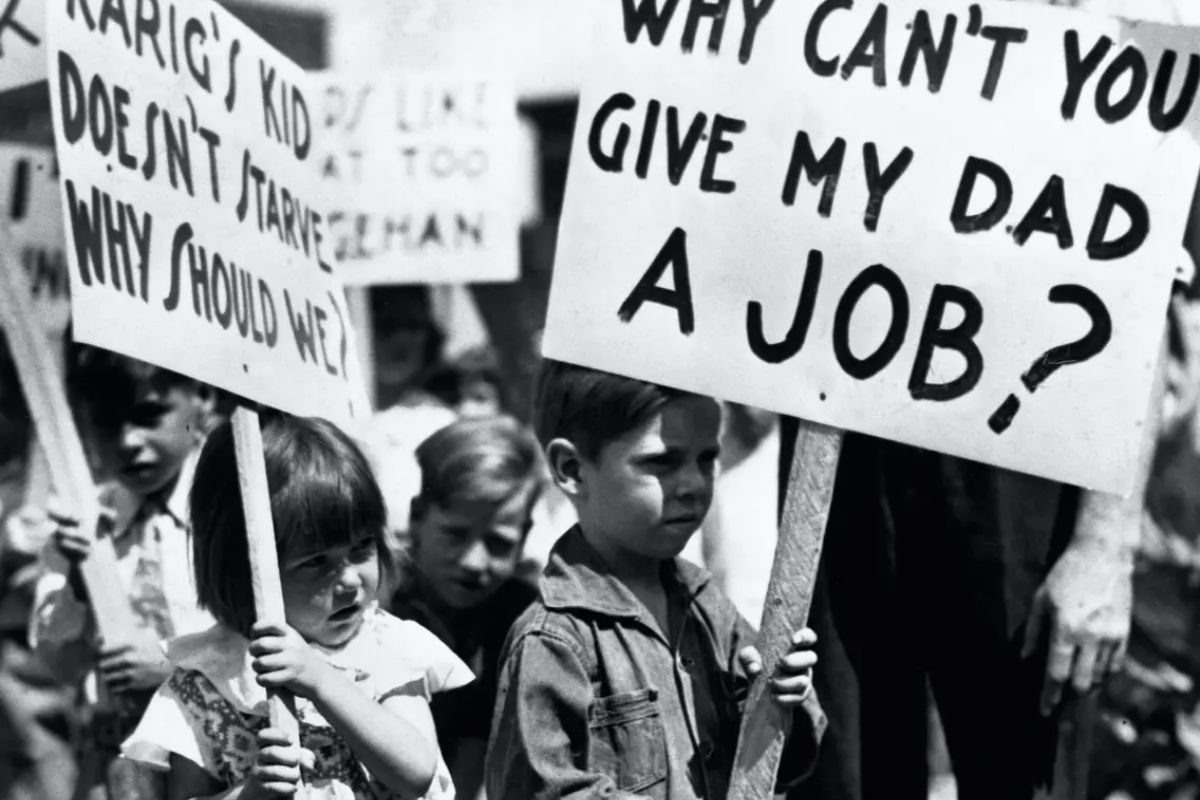Great Depression, Great Depression 1929
The 1929–1939 Great Depression was a global economic depression that affected all countries. The industrialized Western world had never before faced a depression of such length and severity, and as a result, economic institutions, macroeconomic policy, and economic theory underwent significant changes. Despite having its roots in the United States, the Great Depression had a profound impact on nearly every nation in the world, leading to sharp drops in output, high levels of unemployment, and acute deflation. No less startling were its social and cultural repercussions, particularly in the United States, where the Great Depression was the country’s greatest period of hardship since the Civil War.
Economical Background
There were significant regional differences in the Great Depression’s timing and severity. In contrast to Japan and parts of Latin America, where it was milder, the Depression was notably prolonged and severe in the United States and Europe. It may come as no surprise that a variety of factors contributed to the worst economic depression the world has ever known. The United States’ economic output declined due to declines in consumer demand, financial panic, and poorly thought-out government policies. The gold standard, which connected nearly all nations in the world in a network of fixed currency exchange rates, was crucial in spreading the American downturn to other nations. The removal of the gold standard and the subsequent monetary expansion were major contributors to the Great Depression’s recovery. The Great Depression had a significant impact on the economy, resulting in both severe human misery and significant shifts in economic strategy.

Also Read:
Timing And Seriousness
In the summer of 1929, the United States had a typical recession before the start of the Great Depression. However, the downturn significantly worsened in late 1929 and persisted until early 1933. Real output and prices both dropped sharply. The United States saw a 47 percent fall in industrial production during the downturn’s height and a 30 percent decline in the real gross domestic product (GDP). The index of wholesale prices fell 33%. (such declines in the price level are referred to as deflation). Although there is some disagreement regarding the validity of the data, it is generally accepted that the unemployment rate at its peak was higher than 20%. When compared to the Great Recession of 2007–2009, which saw the country’s real GDP shrink by just 4.3 percent and its unemployment rate reach a peak of less than 10 percent, the Great Depression in the United States severity is made more obvious.
What Led To The Decline?
The primary driver of the Great Depression in the United States was a drop in consumer spending, often known as aggregate demand. This decline in demand caused a decline in production as a result of manufacturers and retailers observing an unplanned increase in inventories. Over the course of the Depression, the causes of the reduction in American spending varied, but they all added up to a massive drop in aggregate demand. The gold standard played a significant role in spreading the American slide to the rest of the world. But a number of other reasons also had a role in the slump in different nations.
Society And Culture During The Great Depression
The 1930s were the most horrific decade of the 20th century for people all across the world. Economic chaos, the growth of authoritarianism, and the impending (or ongoing) war were among the horrors of the decade. Nevertheless, different regions of the world have distinct methods of remembering the decade. The 1930s will always be remembered by Americans as the decade of the Great Depression. Bank panics eroded confidence in the financial system, while unemployment lowered confidence in the future. The Great Plains saw the greatest drought in contemporary American history in 1934. The entire region was transformed into a massive Dust Bowl by windstorms that stripped the topsoil from millions of acres, resulting in catastrophic levels of agricultural and livestock destruction. Around 2.5 million people left the Plains states as a result, many of them heading for California, where the lure of sunshine and a better life frequently came afoul with the reality of insufficient, low-paying work as migrant farm laborers.

